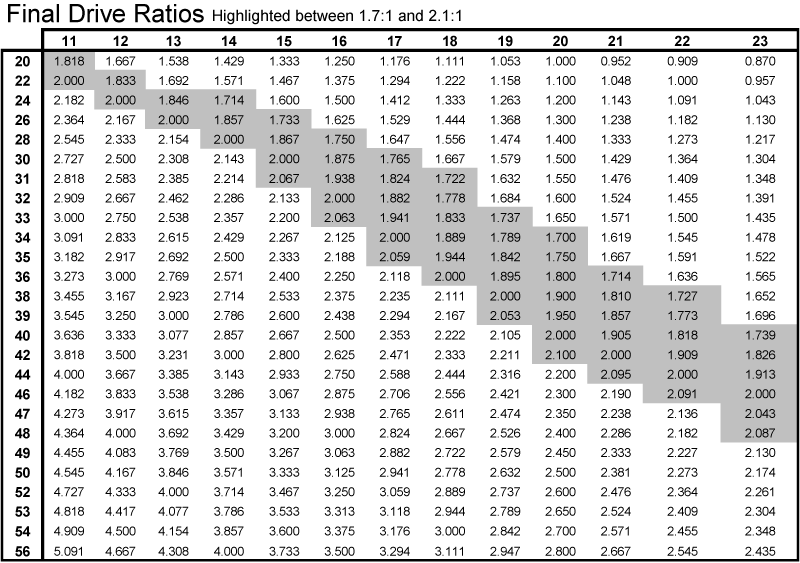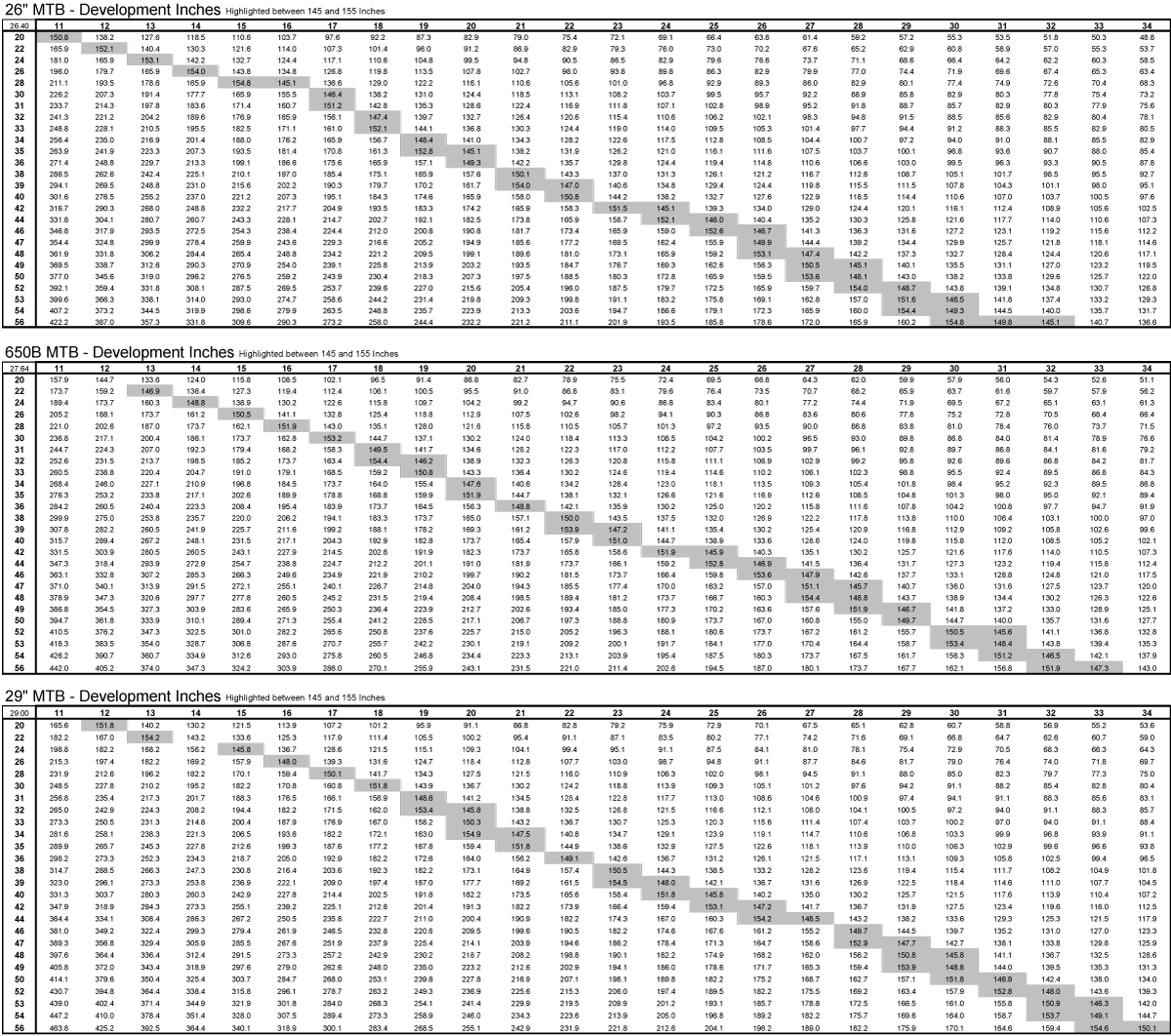Difference between revisions of "Single Speed Gearing"
(→Caveat) |
|||
| Line 28: | Line 28: | ||
===Personal Selection=== | ===Personal Selection=== | ||
Personaly, I am running a 34/19 gear (148.4"). We do a lot of climbing where I live, and I'm overweight and not the strongest climber. I would love to go up to 34/18 (156.7") or 32/17 (156.1"). That would help my downhill speeds a little if I could handle the gear on the climbs, but with mud season coming, I may even have to drop to 34/20 (141.0) depending on power losses. We will see. | Personaly, I am running a 34/19 gear (148.4"). We do a lot of climbing where I live, and I'm overweight and not the strongest climber. I would love to go up to 34/18 (156.7") or 32/17 (156.1"). That would help my downhill speeds a little if I could handle the gear on the climbs, but with mud season coming, I may even have to drop to 34/20 (141.0) depending on power losses. We will see. | ||
| + | |||
| + | |||
| + | [[category:bicycle]] | ||
| + | [[category:drivetrain (Bycycle)]] | ||
Revision as of 16:57, 3 December 2006
Often when talking about gearing a singlespeed, the expression "two to one" comes up. Beside the fact that this is a meaningless statement, it implys that the coice of gears is based on easy math rather than real decisions. Let's look at this.
Caveat
All gearing choice and discussion is conditional on the possibility of actually finding a gear and chain combination that is actually possible to use. This discussion is covered on the Chain Length Calculation page.
Simple Math
32 devided by 2 is 16. So the ratio of 32 to 16 is 2:1.
34 devided by 2 is 17. So the ratio of 34 to 17 is 2:1.
We call this simple math. Any moron can do this math in his/her head with these numbers. What connection does this have with choosing a gear for a bicycle with at specific rider on a specific terrain? Absolutely none. It is just simple math. To base a gearing choice on the fact that the number of teeth on two chosen gears can be devided into the whole numbers of 1 and 2 is nuts.
Ratios
Here is a table of gear ratios with the more common gearing choices highlighted for off road riding, single gear, 26" wheel. It is a quick and simple way of seeing a facet of gearing choice. It doesn't tell the whole story, but it tells us something.

As can easily be seen, a great variety of gears exist within the 2:1 and 1.7:1 range.
'Real' Gearing
Real gearing is probably not the best term. Typically, this is refered to as Rollout or Developement. What makes this a better system to use is that rather than comparing one gear ratio to another, a gear is described by what it actually does. This is the amount of forward distance moved on the bike by each rotation of the crank arms.
Now we can quickly compare 26" MTB wheel gearing to 29" MTB wheel gearing.
Personal Selection
Personaly, I am running a 34/19 gear (148.4"). We do a lot of climbing where I live, and I'm overweight and not the strongest climber. I would love to go up to 34/18 (156.7") or 32/17 (156.1"). That would help my downhill speeds a little if I could handle the gear on the climbs, but with mud season coming, I may even have to drop to 34/20 (141.0) depending on power losses. We will see.

